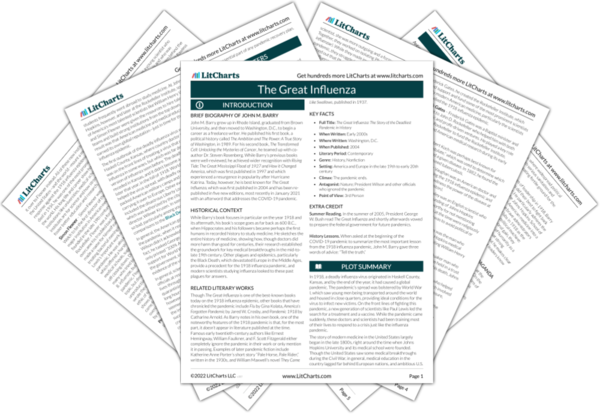Even with the warning from the early wave of influenza, many public health officials continued to underestimate the threat. Barry attempts to get rid of the myth that the 1918 pandemic (and pandemics in general) are impossible to predict; he suggests that, based on what they’d already learned, health officials should have been able to project that the virus would return with a vengeance.
